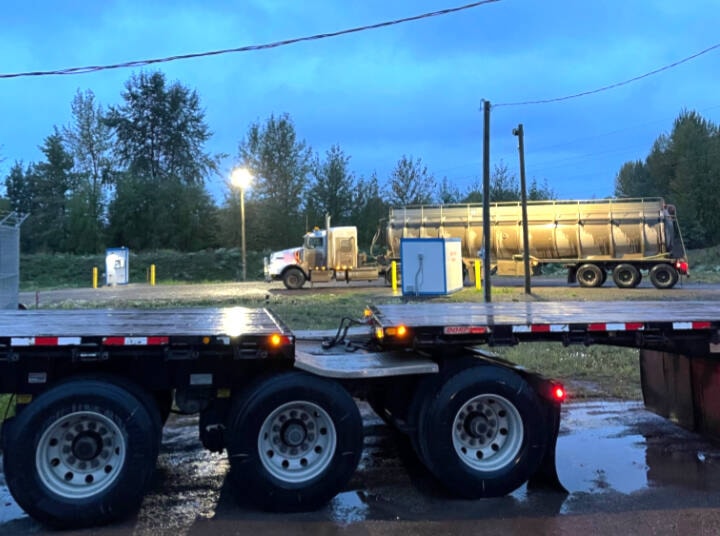Chemicals to reduce the smell of sewage being pumped out of tankers from Coastal GasLink work camps south of Houston at the District of Houston’s new bulk waste station have arrived and are in use.
They were ordered following complaints that the smell wafting through the industrial area, where the station is located, was disrupting and unpleasant for businesses, their employees and customers.
The chemicals arrived Jan. 29 and the District is keeping tabs on how things are going, officials from the District and Coastal GasLink indicated.
“We can confirm that the wastewater odour neutralizer was added to liquid waste loads coming from 9A and P2 Lodges,” said Kiel Giddens from Coastal GasLink.
When complaints of the smell first surfaced halfway through last year, a plan to limit dumping to between 5 p.m. and 8 a.m., so as to avoid normal business hours, was crafted.
But the two above camps, 9A and P2, are the furthest from Houston of the three using the bulk waste station. Because of distances and travel times and scheduling, adhering to a plan for dumping between 5 p.m. and 8 a.m. proved problematic.
And although the chemicals were ordered in the fall, supply chain problems stalled their arrival until late last month.
It’s a different matter with the third camp, called Huckleberry, using the station.
“They have not incorporated this additive, and have made their alternate mitigation on load timing,” said Giddens of the ability to adhere to the 5 p.m. - 8 a.m. dumping time frame.
“The reason this works is because of the shorter distance.”
Coastal GasLink’s work camp provider helped in financing the construction of the bulk waste station and accompanying bulk water station as an alternative to putting in disposal systems in each of the work camps.
Former waste and watering stations were too small for larger industrial users and the financial deal worked out by the District for the two new stations is viewed as benefit because they’ll be in use long after the natural gas pipeline Coastal GasLink is building is finished and the camps have been dismantled.
“Both residential and industrial users can use the facility – they just have to come and set up an account and follow the rules of the facility,” said District of Houston chief administrative officer Michael Dewar.
Users pay a fee based on volume, rates for which are set out in a District of Houston bylaw.
Dewar also affirmed that the volume of waste being pumped out is within the capabilities of the District’s sewage and lagoon system.
“We have already determined that this is not an issue. We are well within our permit regulations and have had engineers comment that we are not exceeding the capacity of the lagoon,” he said.
As of now, the District can discharge a maximum of 3,200 metres per day of effluent from its aerated sewage lagoon system into the Bulkley River under a permit issued by the provincial government.
When the capacity issue was raised last fall, the District hired consulting firm Urban Systems to look into outflows and report back
“Currently, the average daily discharge of effluent for September [2021] was reported as 19 per cent of the daily limit with the highest daily discharge for this month reported as 24 per cent of the 3,200 cubic metres limit,” a memo to council then indicated.
The discharge figures for last September include the volume being pumped into the system by Coastal GasLink’s camps.
